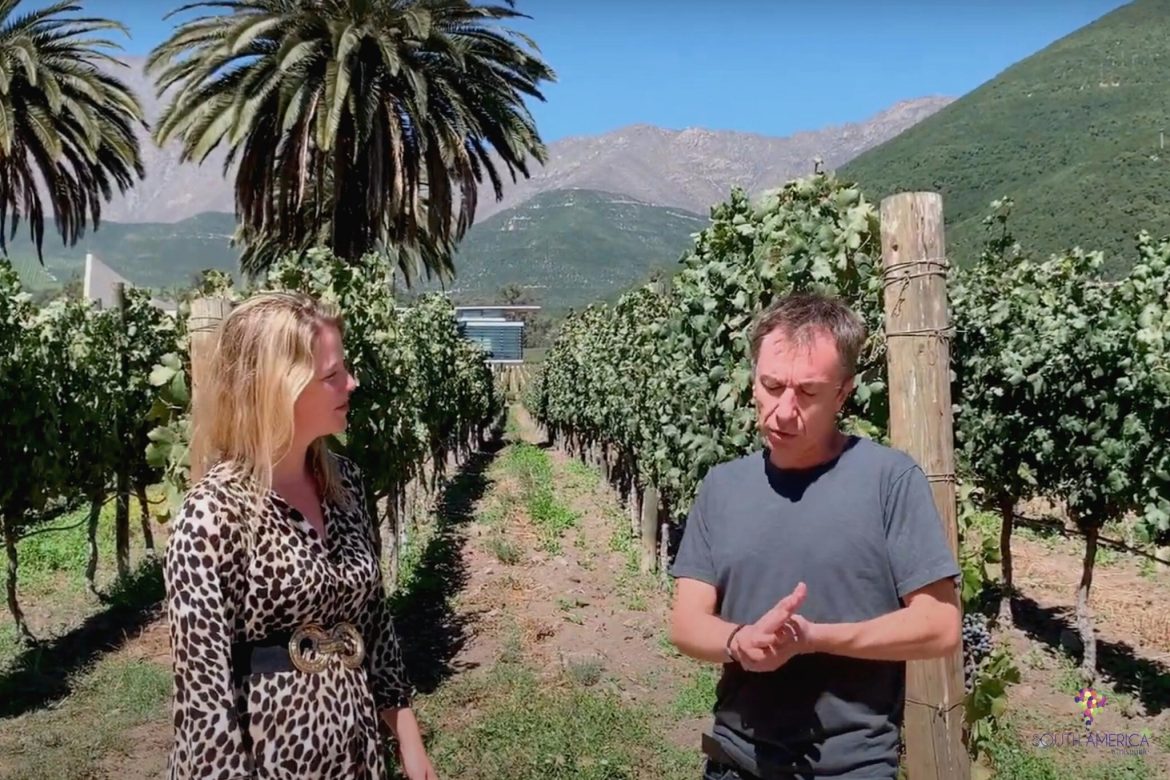Get to grips with the terroir of Aconcagua from Costa to Andes in this interview with winemaker Francisco Baettig, in the vineyards of Errazuriz, as he tells Amanda Barnes how the difference in terroir reflects in the wines.
Viña Errazuriz is a pioneer of Aconcagua valley, making wine there since 1870, and has planted vineyards right from the coast to the Andes mountains. The newest development is towards the coast, Aconcagua Costa, which is cooler because of the influence of the coastal breezes from the Pacific and some sea fog and clouds. These cool conditions make it excellent for growing cool-climate varieties like Pinot Noir and Chardonnay. The soil profile is quite different as well with schist and metamorphic rock.
Further inland, after the coastal range, in the Entre Cordilleras and Andes regions of Aconcagua the influence of the sea is less and therefore it’s warmer. You also get a lot more sunshine in inland Aconcagua, which is very good for ripening Bordeaux varieties as well as Mediterranean varieties, like Grenache and Syrah. A mixture of alluvial and granite rocks here with diverse slopes and exposures make for quite a patchwork of microclimates and soils to work from, as Francisco Baettig explains.
Amanda also asks Francisco to explain the key differences between Cabernet Sauvignon in Aconcagua, with Cabernet Sauvignon from Maipo (and in particular their famed Chadwick vineyard!) And they touch on the identity of Syrah in Chile.
The terroir and the wines of Aconcagua Valley and Aconcagua Costa with Francisco Baettig at Viña Errazuriz
